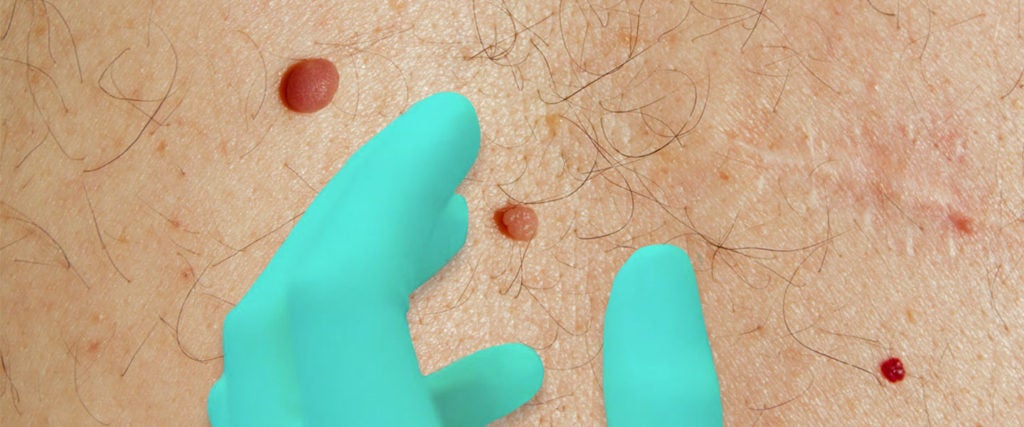About a year ago, I noticed a sizable, single-haired mole protruding from my lower back. Me being a hypochondriac, especially when it comes to skin-related ailments, I immediately made an appointment with my primary care physician — after having a routine panic attack, of course — who eventually explained that my mole looked fine and dandy. (I remain alive to this day, so he seems to have been correct.)
But ever since that mole-inspired scare, every brown bump on my skin causes my alarm bells to ring. Since rushing to the doctor whenever I notice a new speck is out of the question, especially during these pandemic days, I instead asked dermatologist Anthony Rossi to teach me — and anyone else reading — how to spot moles worth worrying about.
First, though, a quick explanation of what moles actually are: We each have a bunch of pigment-producing cells in our skin called melanocytes, Rossi explains, which essentially decide our skin color. When a bunch of those cells collect in a single area, they sort of cluster together to form what we call a mole.
There are three different types of moles. The first sits on the top layer of the skin and is what dermatologists call an epidermal nevi (nevi being the medical term for mole). The second sits just below the skin and is called a dermal nevi. Lastly, the third is both deeply embedded in the skin and protrudes above it — that beast of a mole is called a compound nevi.
While many people are simply born with moles, if you just noticed one recently, it might be the result of not wearing enough sunscreen — too much sun exposure is a quick way to sprout a mole.
Finally, the important question: How do I know if my mole is going to kill me?
Well, rest easy knowing that most moles are an eyesore at worst. That said, you should be keeping a close eye on your moles — especially if you have a family history of skin cancer — to make sure they never become atypical, which can be an early sign of melanoma.
How do you spot an atypical mole?
Use the “ABCDE” rule:
- A = Asymmetry: The mole isn’t perfectly symmetrical.
- B = Border: The border of the mole is irregular or jagged.
- C = Color: There are multiple colors — i.e., red, black and brown — within the mole.
- D = Diameter: The diameter of the mole is larger than six millimeters, or the size of a pencil eraser.
- E = Evolving: The mole is changing shape or size.
If any of those rules apply to your mole, do what I did and get it checked out by a doctor right away (but maybe skip the panic attack if possible). And if you ever want a mole removed, please — please! — visit a board-certified dermatologist. Do not, under any circumstances whatsoever, attempt to remove it yourself. This really, really bears repeating, so: DO. NOT. REMOVE. IT. YOURSELF.
With that out of the way, the professional approach to removing moles depends on (a) where they’re located on the body; and (b) whether or not the patient cares how it looks afterwards. If it’s for medical purposes and the patient doesn’t mind a small scar, it’s simply taken out with a scalpel. If it’s on your face, though, a more cosmetic approach is taken, either by shaving it off, or using a small cookie cutter-like device to remove it. A stitch is then applied so it heals up nicely.
And there you go: Everything you need to know about whacking a dangerous mole.


